Classic Gear: The Roland System-100
The System-100 is one of the best analogue synths ever made.
In this edition of Classic Gear, we’re going deep into the Roland System-100, the landmark semi-modular synthesizer system that is still turning heads today.
In 1976, Roland was in its fourth year as a company. Although it had already released a few synthesizers, it was about to unleash its biggest and baddest yet, one that still to this day remains unrivaled in terms of sound and scope. I’m talking about the System-100.
The Roland System-100
A semi-modular component package, the System-100 featured five different elements that could be purchased as a whole or separately. The complete system included two monophonic analogue synthesizers, a mixer, a sequencer, and two speakers. When assembled, it looked like nothing else on the market. Resembling a spaceship control panel more than a synthesizer, it featured a powerful industrial design and even more powerful sound.

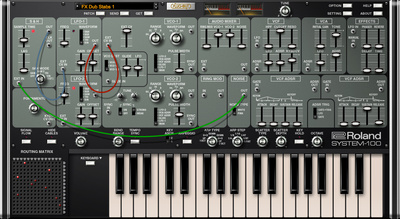
The Modules
The complete System-100 consists of several modules. While some provide essential synthesis capabilities, others add to the overall creative versatility of the instrument.
Model-101 Synthesizer
At the heart of the Roland System-100 was the Model-101, a single-oscillator monosynth with a built-in three-octave keyboard (F to F). Roland endowed it with triangle, sawtooth, square and pulse wave waveforms and it could modulate the pulse with ADSR, LFO or manually.
It had a solid diode ladder lowpass filter with resonance as well as the Roland standard non-resonant highpass filter. A single envelope plus noise generator (white and pink) rounded things out.
Model-102 Expander
For more esoteric synthesis options, you’d also need the Model-102 unit. A keyboardless expander, Roland designed it to stand flush behind the 101, creating a continuous panel that would complement and add to it. While many of the specs were identical, it replaced the noise generator with ring modulation and added a comprehensive sample and hold circuit.
This featured a number of unusual modes, including sawtooth, ramp and triangle, plus an external for patching in noise from the 101 for the standard telemetry S&H sound. It also had a sample lag control for dampening the effect.
Model-103 Mixer, Model-104 Sequencer, and Model-109 Speakers
Model-103, the mixer, sat to the right of the 101 and could take four inputs. It had VU meters, panning, effect send/return and a built-in spring reverb tank plus line outs for studio use. It also powered the speakers.
Occupying the space to the left was Model-104, the sequencer. Its two independent lanes of 12 steps each could be run in series or parallel and it featured adjustable gate time and start, stop, continue and step buttons.
Finally, the Model-109 speakers sat behind the mixer and sequencer, respectively.

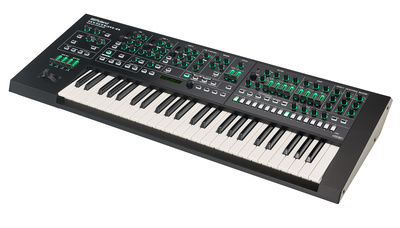
The System-100 In Use
I’m the proud owner of a Model-101 and 102 and while Roland synths are known to be musical and solid they are not necessarily muscular. However, the System-100 flies in the face of this. It is, by far, the beefiest synth in my collection. It’s almost American in the sheer power of its oscillators.
The 101 is a monster monosynth but it really comes alive when paired with the 102. Thanks to the expander’s additional synthesis options like ring mod and sample and hold, it transforms from a capable instrument into a formidable powerhouse. Although it’s not as flexible as, say, an ARP 2600, the fact that it’s semi-modular really opens up the possibilities.
It’s a shame that Roland didn’t maintain a line of muscle synths like the System-100 (beyond the SH-5 and SH-7, similar growlers from the same time period). The System-100m, which came out a few years later, is gorgeous but it’s much more Roland-like and polite. It’s nowhere near the bruiser that the System-100 is.

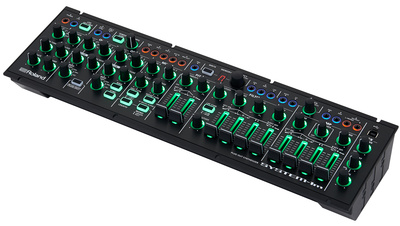
Famous System-100 Users
Tons of artists have used the System-100, from Front 242 to Orbital to Vangelis, but none is arguably more famous than the Human League. Indeed, Human League made its early albums Reproduction and Travelogue almost entirely with a System-100 – well, an expanded version of the system with a single 101, two 102 expanders, a 103 mixer and two 104 sequencers.
For the early synth-pop musicians, who were working with very limited budgets, the System-100 allowed them creative freedom. Sort of the 1970s equivalent of a modern DAW, it enabled musicians to play basslines, leads and even percussion thanks to the surprisingly flexible sequencer. The mixer let them adjust levels, bring in effects, and even hear it via the speakers. It’s hard to overstate how much this democratized music-making in the days of expensive studios.

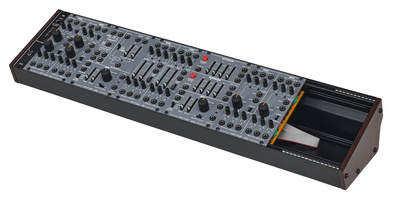
Modern Equivalents
For such an iconic instrument there aren’t many modern recreations or even similar-sounding ones. If you’re after the System-100 sound, your best bet is to get yourself an original set. The second best is Roland’s official software recreation, Roland Cloud System-100, which combines models 101 and 102 into a single GUI. Owners of a System-8 can load it in that, or control it from a System-1m hardware unit.
While not a System-100 recreation, Roland’s Boutique analogue SE-02 (made in collaboration with Studio Electronics) combines beefy oscillators with Japanese filters.
On the Eurorack side, there are quite a few modules recreating the sound of the System-100m but that’s a very different beast than the 100. Roland and Malekko’s System 500 series 505 filter module, however, is an emulation of the SH-5 filter, which is similar to the System-100.

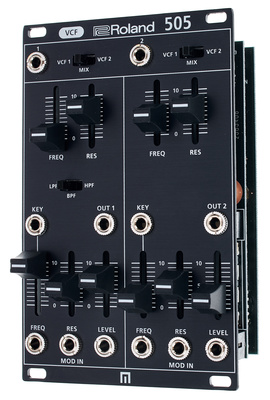
Production on the System-100 ended in late 1978, replaced by the System-100m. The 100 was a powerful set of instruments and peripherals and helped Roland make its mark in the synthesizer world. It also helped many musicians get their songs heard at a time when most studio doors were closed to them. It was truly a landmark instrument and a high watermark in the history of synthesizers.

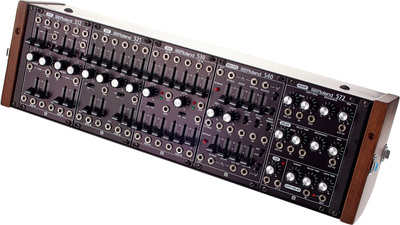
More about the Roland System-100:
- A great System-100 resource page
- The System-100 on the Roland blog
- Get the Roland Cloud System-100
- Everything Roland
Videos:
You are currently viewing a placeholder content from YouTube. To access the actual content, click the button below. Please note that doing so will share data with third-party providers.
You are currently viewing a placeholder content from YouTube. To access the actual content, click the button below. Please note that doing so will share data with third-party providers.
You are currently viewing a placeholder content from YouTube. To access the actual content, click the button below. Please note that doing so will share data with third-party providers.
Note: This article contains affiliate links that help us fund our site. Don’t worry: the price for you always stays the same! If you buy something through these links, we will receive a small commission. Thank you for your support!
One response to “Classic Gear: The Roland System-100”

 5,0 / 5,0 |
5,0 / 5,0 | 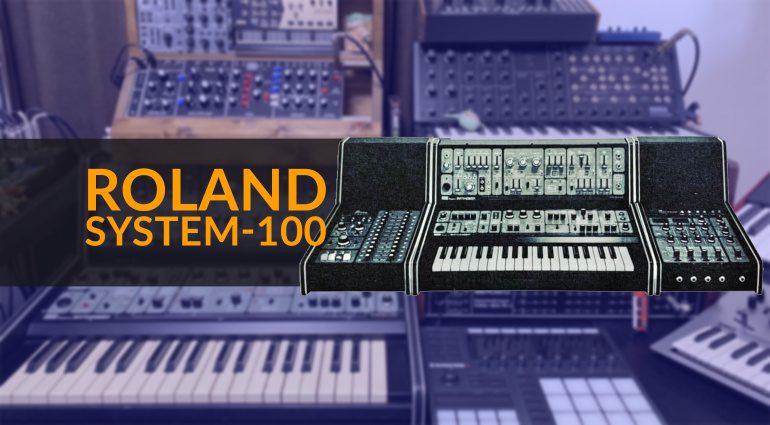

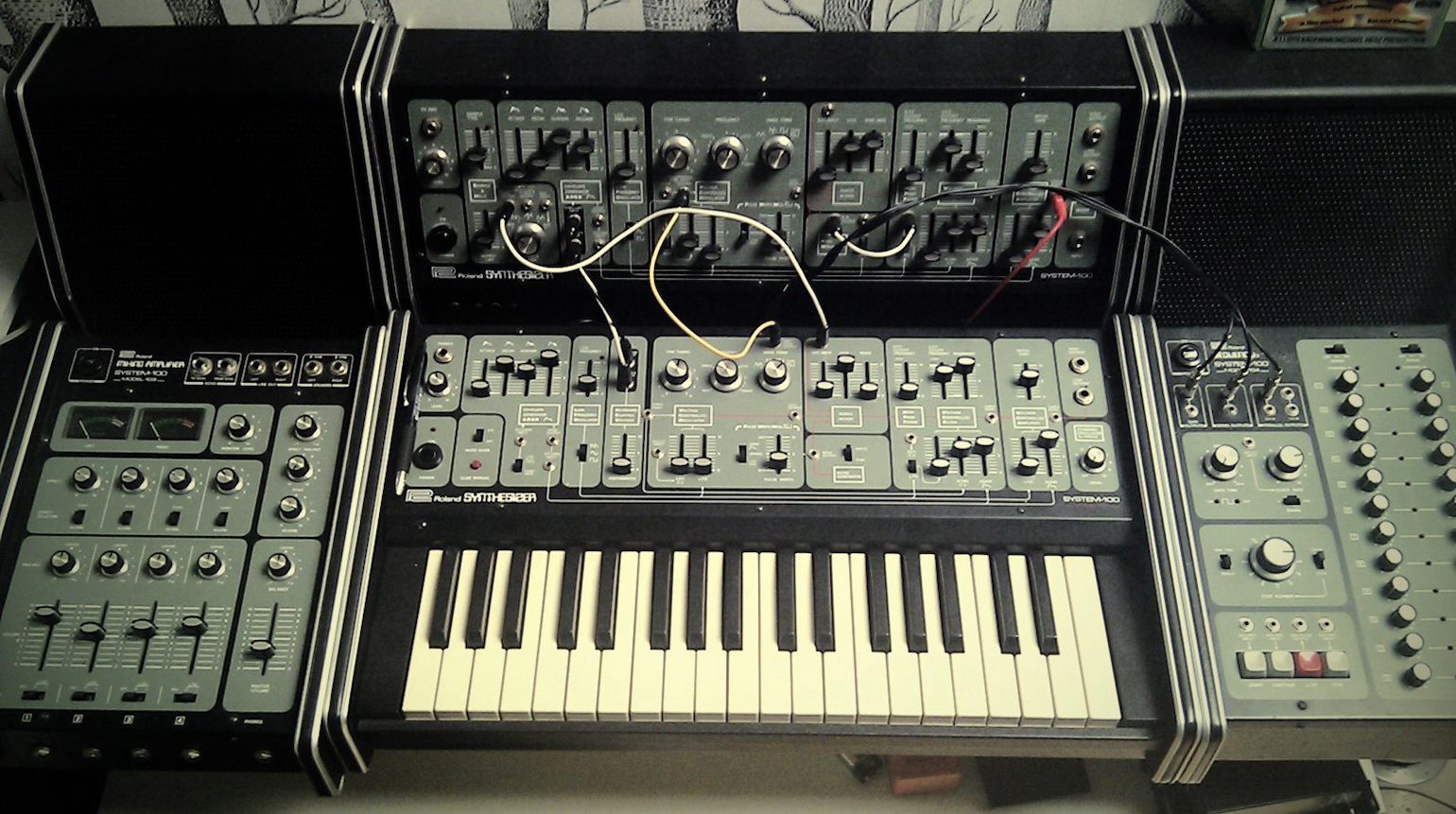

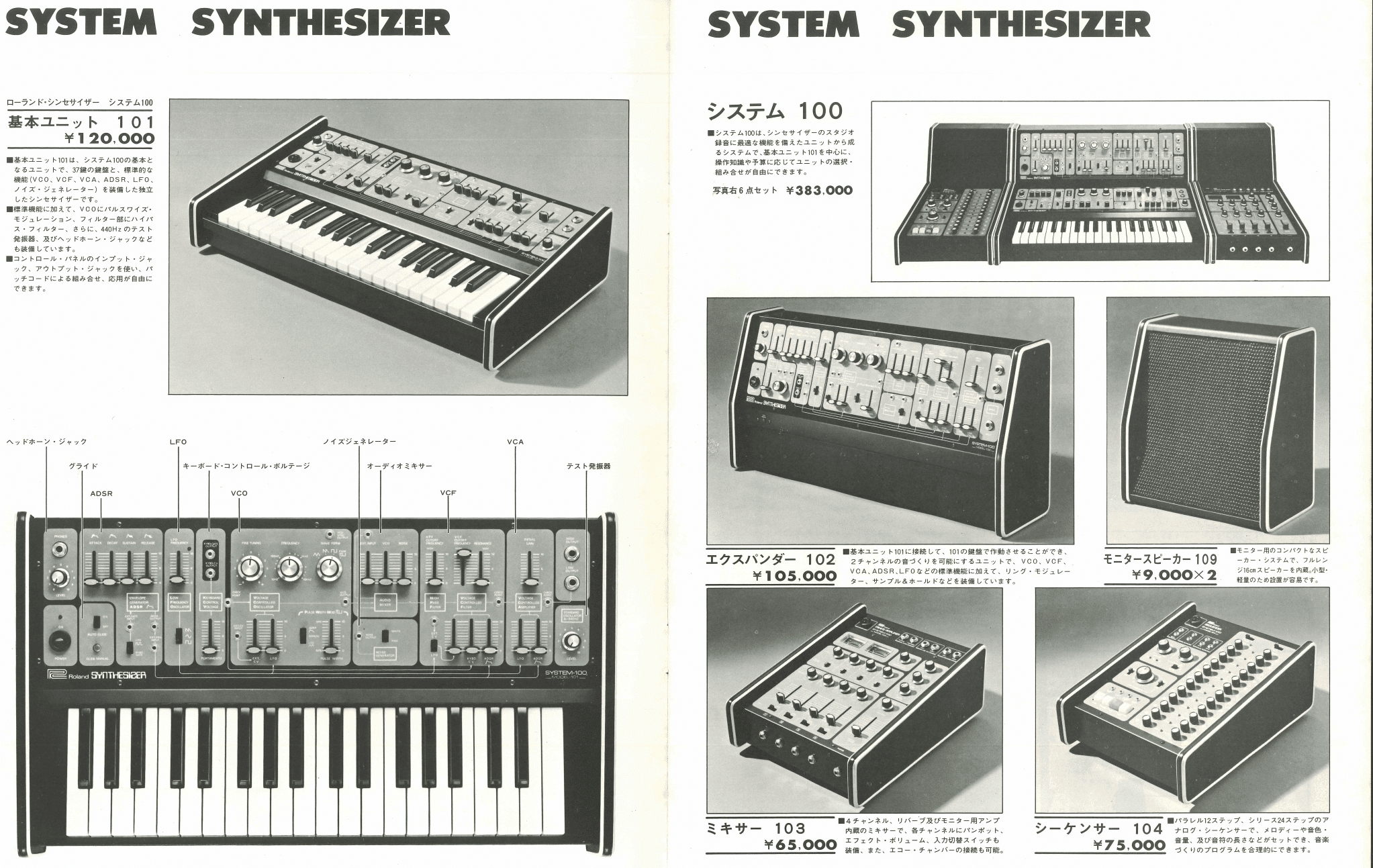
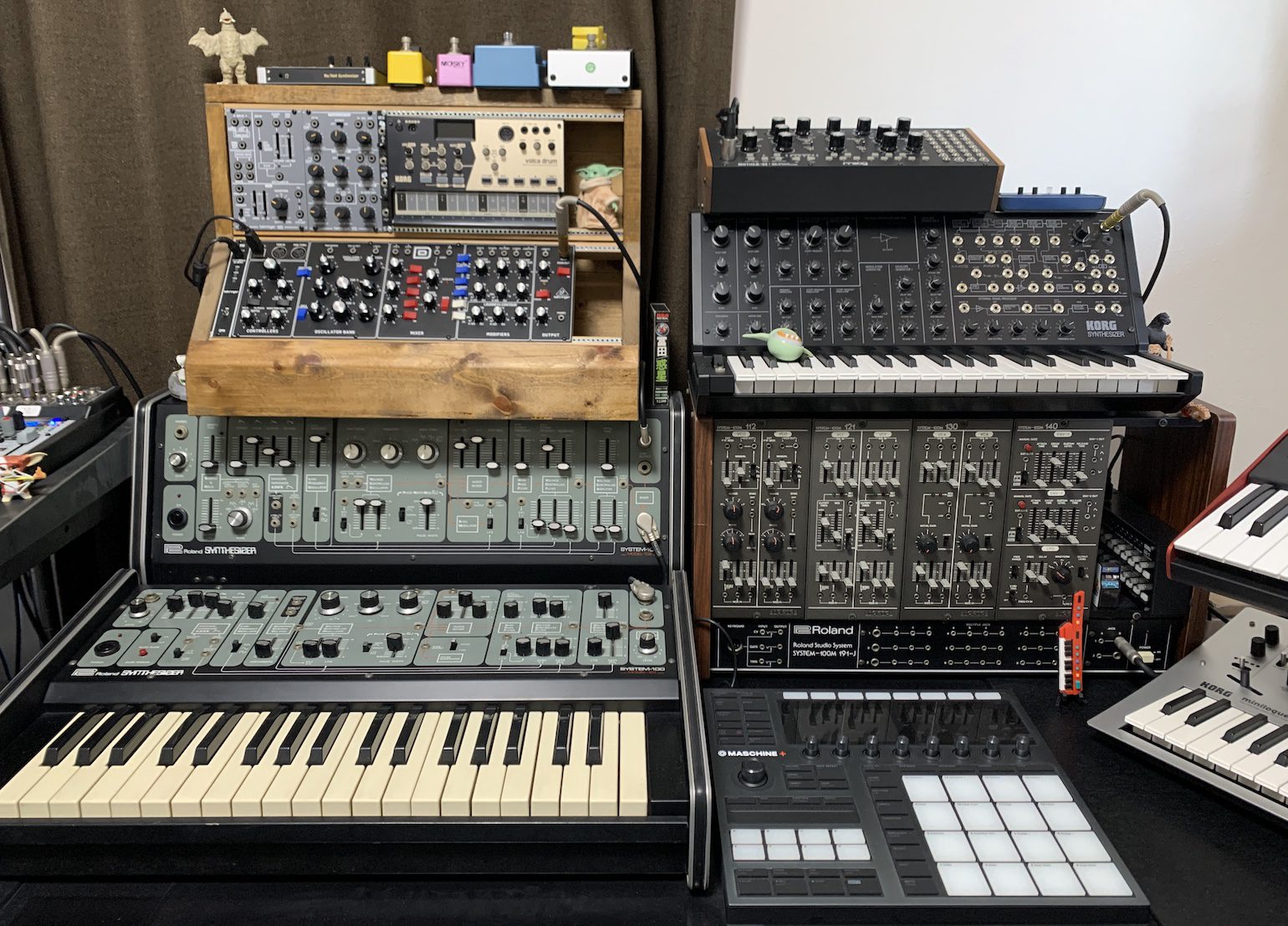
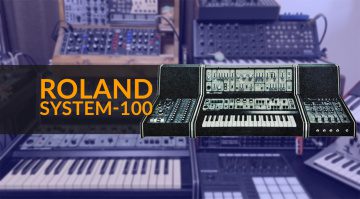

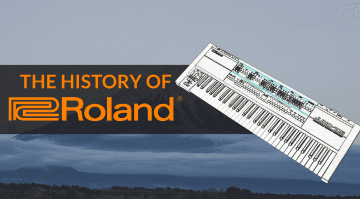
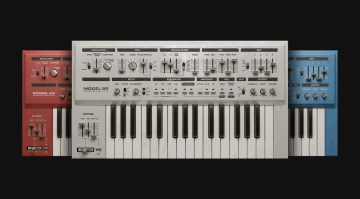
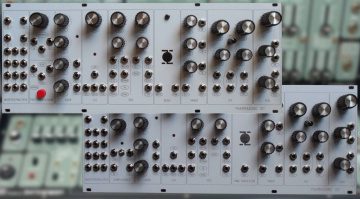
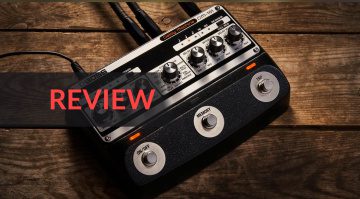

I have the Behringer System 100, and thats still the best option to get the closest Sound of the original System 100. Nö doubt!